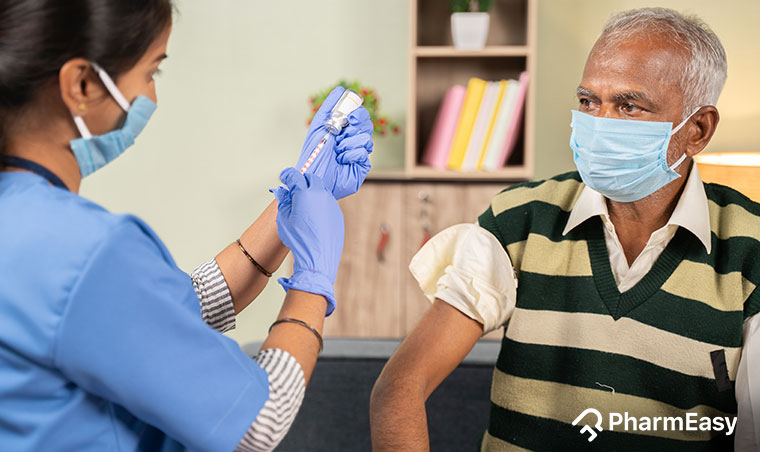How Will India Vaccinate 1.3 Billion People Against COVID-19?
By Dr. Nikita Toshi +2 more

Get,

to manage your symptom
Get your,


4 Cr+ families
benefitted

OTP sent to 9988776655



You’ve successfully subscribed to receive
doctor-approved tips on
Whatsapp

Get ready to feel your best.

Hi There,



Register to Avail the Offer
Send OTPBy continuing, you agree with our Privacy Policy and Terms and Conditions

Hi There,

Trusted by 4 crore+ families

OTP sent to 9988776655



You have unlocked 25% off on medicines




Code: NU25

By Dr. Nikita Toshi +2 more
According to the latest press release by the Honorable Prime Minister of India, vaccination will start in January 2021. After a year-long struggle with COVID-19, financial difficulties, job loss, and the constant threat of falling sick, this is the news that has somehow delighted us all.

Now, so we know that vaccination will kick off early next year, have you actually thought about how India will vaccinate millions of people?
Table of Contents
India’s current population is nearly 1.3 billion. You might think that since India manages the largest electoral system in the world so efficiently, vaccinating a huge number of people will be easy. However, India has 900 million voters, whereas 1.3 billion people will need vaccine. Also, vaccination of mass is not as easy as managing the electoral system.
But as our honurable Prime Minister has pointed out, India also has in place the world’s largest immunization system. Since independence, children and pregnant women are vaccinated against major illnesses at both government and private healthcare facilities. These vaccines are produced, and stored in India and regularly transported across the length and breadth of the country to reach every village and city.
Hence India will utilise this system to bring the vaccine to the most remotecorners of the country.
Vaccinating not just adults but even children is important as a COVID-19 vaccine can prevent your child from getting infected and spreading coronavirus. If your child gets infected, a COVID-19 vaccine could prevent them from becoming severely ill in subsequent exposure to COVID-19 infection.
Dr. Ashish Bajaj – M.B.B.S, M.D.
While what the honorable Prime Minister said sounds promising, experts feel that things might not be so simple.
Another very legitimate fear that the government has not yet addressed is that if all resources are being directed towards providing the masses with COVID-19 vaccines, how will children and women be administered other vital vaccines? This could put millions of lives at risk.
Experts feel that India has to massively scale up infrastructure in the upcoming months.
Unless the logistics are handled without error, India’s entire population will not be vaccinated as soon as we had expected. Collaboration internally and internationally is of the highest importance now.

Leave your comment...
Comments